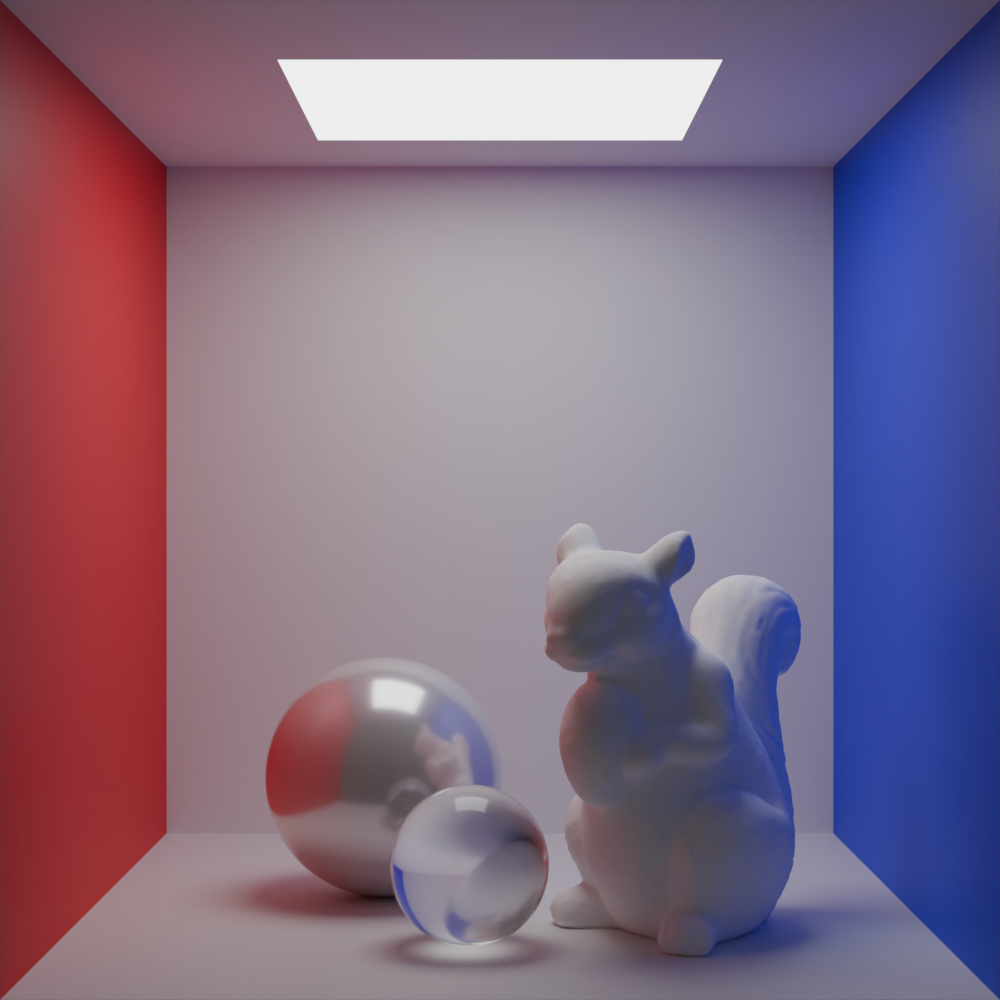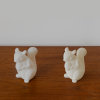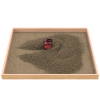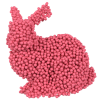publications
publications in reversed chronological order.
2025
-
 The creation of virtual scenes and their realistic embedding in the real environmentAlexander SommerJohannes Gutenberg-University, 2025
The creation of virtual scenes and their realistic embedding in the real environmentAlexander SommerJohannes Gutenberg-University, 2025The creation of virtual worlds has fascinated researchers for several decades. Advances in hardware have made it ever more feasible for the virtual and real worlds to merge seamlessly in the field of mixed reality (MR). This research field combines a wide range of disciplines, such as computer graphics, computer vision, machine learning, and physics. Despite great progress in the last decade, several challenges remain, particularly in achieving real-time performance on devices with limited hardware resources or in providing convincing visual quality with existing methods. This thesis explores various aspects of MR and presents methods to improve the quality of applications in this domain. It includes a set of techniques for sampling the volume and surface of 3D objects using discrete points. Building on these techniques, a novel method for real-time simulation of granular materials with large particle numbers is introduced. By structuring the simulation in two stages, the method first simulates a small number of particles, including all acting forces. Subsequently, a larger number of particles are added for visualization, partially following the velocity field defined by the first stage. This approach allows for a more immersive experience in virtual reality applications where interactions with materials like sand or gravel are simulated, such as in heavy equipment operator training. Moreover, this thesis focuses on improving the photometric registration of virtual objects in augmented reality applications. A method for analyzing the real-world lighting situation is presented, using geometric and photometric parameters derived from an RGB camera image with an artificial neural network. Furthermore, a novel method for the efficient visualization of soft cast shadows of virtual objects is introduced. In this approach, shadow textures are encoded within tiny artificial neural networks, which can be queried based on the current lighting situation to produce realistic shadows with minimal computational overhead.
@phdthesis{Sommer25, title = {The creation of virtual scenes and their realistic embedding in the real environment}, author = {Sommer, Alexander}, year = {2025}, school = {Johannes Gutenberg-University}, address = {Mainz, Germany}, type = {Monograph}, doi = {10.25358/openscience-13379}, url = {https://openscience.ub.uni-mainz.de/handle/20.500.12030/13400}, }
2023
-
 Real-time light estimation and neural soft shadows for AR indoor scenariosAlexander Sommer, Ulrich Schwanecke, and Elmar SchömerJournal of WSCG, 2023
Real-time light estimation and neural soft shadows for AR indoor scenariosAlexander Sommer, Ulrich Schwanecke, and Elmar SchömerJournal of WSCG, 2023We present a pipeline for realistic embedding of virtual objects into footage of indoor scenes with focus on real-time AR applications. Our pipeline consists of two main components: A light estimator and a neural soft shadow texture generator. Our light estimation is based on deep neural nets and determines the main light direction, light color, ambient color and an opacity parameter for the shadow texture. Our neural soft shadow method encodes object-based realistic soft shadows as light direction dependent textures in a small MLP. We show that our pipeline can be used to integrate objects into AR scenes in a new level of realism in real-time. Our models are small enough to run on current mobile devices. We achieve runtimes of 9ms for light estimation and 5ms for neural shadows on an iPhone 11 Pro.
@article{Sommer23, title = {Real-time light estimation and neural soft shadows for {AR} indoor scenarios}, author = {Sommer, Alexander and Schwanecke, Ulrich and Sch\"{o}mer, Elmar}, year = {2023}, journal = {Journal of WSCG}, volume = {31}, pages = {71--79}, doi = {10.24132/jwscg.2023.8}, }
2022
-
 Interactive high-resolution simulation of granular materialAlexander Sommer, Ulrich Schwanecke, and Elmar SchömerJournal of WSCG, 2022
Interactive high-resolution simulation of granular materialAlexander Sommer, Ulrich Schwanecke, and Elmar SchömerJournal of WSCG, 2022We introduce a particle-based simulation method for granular material in interactive frame rates. We divide the simulation into two decoupled steps. In the first step, a relatively small number of particles is accurately simulated with a constraint-based method. Here, all collisions and the resulting friction between the particles are taken into account. In the second step, the small number of particles is significantly increased by an efficient sampling algorithm without creating additional artifacts. The method is particularly robust and allows relatively large time steps, which makes it well suited for real-time applications. With our method, up to 500k particles can be computed in interactive frame rates on consumer CPUs without relying on GPU support for massive parallel computing. This makes it well suited for applications where a lot of GPU power is already needed for render tasks.
@article{Sommer22, title = {Interactive high-resolution simulation of granular material}, author = {Sommer, Alexander and Schwanecke, Ulrich and Sch\"{o}mer, Elmar}, year = {2022}, journal = {Journal of WSCG}, volume = {30}, pages = {9--15}, doi = {10.24132/jwscg.2022.2}, }
2021
-
 LEAVEN - Lightweight surface and volume mesh sampling application for particle-based simulationsAlexander Sommer and Ulrich SchwaneckeComputer Science Research Notes, 2021
LEAVEN - Lightweight surface and volume mesh sampling application for particle-based simulationsAlexander Sommer and Ulrich SchwaneckeComputer Science Research Notes, 2021We present an easy-to-use and lightweight surface and volume mesh sampling standalone application tailored for the needs of particle-based simulation. We describe the surface and volume sampling algorithms used in Leaven in a beginner-friendly fashion. Furthermore, we describe a novel method of generating random volume samples that satisfy blue noise criteria by modifying a surface sampling algorithm. We aim to lower one entry barrier for starting with particle-based simulations while still pose a benefit to advanced users. The goal is to provide a useful tool to the community and lowering the need for heavyweight third-party applications, especially for starters.
@article{Sommer21, title = {{LEAVEN} - {L}ightweight surface and volume mesh sampling application for particle-based simulations}, author = {Sommer, Alexander and Schwanecke, Ulrich}, year = {2021}, journal = {Computer Science Research Notes}, volume = {31}, number = {1}, pages = {155--160}, doi = {10.24132/csrn.2021.3101.17}, }
2020
-
 Chebyshev’s method on projective fluidsAlexander Sommer, Ulrich Schwanecke, and Elmar SchömerJournal of WSCG, 2020
Chebyshev’s method on projective fluidsAlexander Sommer, Ulrich Schwanecke, and Elmar SchömerJournal of WSCG, 2020We demonstrate the acceleration potential of the Chebyshev semi-iterative approach for fluid simulations in Projective Dynamics. The Chebyshev approach has been successfully tested for deformable bodies, where the dynamical system behaves relatively linearly, even though Projective Dynamics, in general, is fundamentally nonlinear. The results for more complex constraints, like fluids, with a particular nonlinear dynamical system, remained unknown so far. We follow a method describing particle-based fluids in Projective Dynamics while replacing the Conjugate Gradient solver with Chebyshev’s method. Our results show that Chebyshev’s method can be successfully applied to fluids and potentially other complex constraints to accelerate simulations.
@article{Sommer20, title = {Chebyshev's method on projective fluids }, author = {Sommer, Alexander and Schwanecke, Ulrich and Sch\"{o}mer, Elmar}, year = {2020}, journal = {Journal of WSCG}, volume = {28}, number = {1--2}, pages = {132--136}, doi = {10.24132/jwscg.2020.28.16}, }